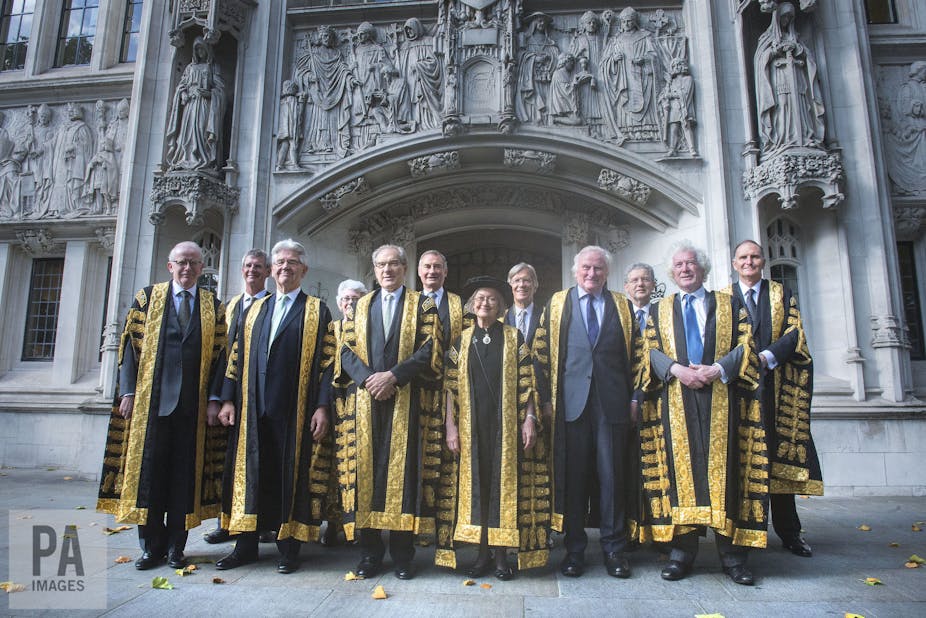Shortly before his retirement at the end of 2016, the then supreme court President, Lord Neuberger, stated that “the higher echelons of the judiciary in the UK suffer from a marked lack of diversity and … the supreme court does not score at all well”.
In a year where equality has been more at the forefront of the public consciousness than ever before, one would hope that this stark commentary from Britain’s top judge would have sparked some change. And yet, more than a year later, little progress has been made.
There have been plenty of opportunities for the judiciary to become more diverse in recent months. However, between 2016 and 2017, official figures show that female, and black, Asian and minority ethnic (BAME) judicial appointments either remained largely consistent or saw minuscule improvements. By the close of 2017, 28% of judges were female (consistent with 2016), and only seven per cent were BAME.
In addition, despite it now being 30 years since Lady Butler-Sloss became the first woman to be appointed a justice of appeal, there are only nine women out of 39 in the court of appeal.
But despite this and more, the secretary of state for justice has recently rejected calls for “judicial diversity targets”, saying it is the “wrong approach”.
Balanced moves
That’s not to say there were no changes, however. While overall there was limited improvement, there were some positive signs of progress elsewhere. In total, 45% (806) of tribunal judges are now female. And BAME representation now accounts for ten per cent of court judges under 40, and 14% of tribunal judges under 40.
But still the judiciary is mostly living up to its older, white male stereotype. 2017 saw the first BAME judge being appointed to the court of appeal – Justice Singh – and though it is a significant step, his presence only amounts to a 2.56% BAME representation on this court’s benches (one out of 39). Meanwhile, no supreme court positions have been filled with BAME appointments to date.
Another improvement was Lord Neuberger’s replacement by Lady Hale as president of the supreme court, with Lady Black also joining the highest court of England and Wales. But this has only improved the supreme court’s gender balance from 8.3% to 16.6% female.

Looking at international figures, it becomes clear that this lack of diversity is not just a British problem. Council of Europe research from 2016 shows that 72% of countries are failing to meet its 40% minimum of female judges target.
However, compared to other states, the UK was, at the time, second worst for gender balance within their respective high/supreme courts – second only to Italy. Though this situation has now marginally improved, the UK still has among the worst gender balance within Europe. It also falls behind the US’s supreme court, where female justices make up 33.3% of the court, and which has 11.1% BAME representation.
Crucial timing
Though the situation cannot be changed overnight, there are significant opportunities coming in 2018 that can further redress the balance. Lords Mance, Hughes and Sumption will all reach retirement age, and their positions will be filled by judges from lower down the ranks. If the supreme court follows the precedent it set with the appointments of Lady Black and Lords Lloyd Jones and Briggs in 2017, it is likely that justices of the court of appeal will be in the running for the vacancies. And with nine female judges sitting in that court at present, there is evident potential for more women to progress.
With only one very recent BAME representative appointed to the court of appeal, it is very unlikely that the supreme court will be able to do anything too radical on this issue this year. But the movement of appeal court judges will leave further positions to be filled, which can and should be taken by BAME and female judges.
Though appointments to the supreme court, court of appeal and high court should rightly always be reserved for the most capable jurists based on merit, questions have to be asked as to why diverse candidates have not naturally filtered to the pinnacles of the profession. Diversity targets are off the table for now, but the justice secretary should revisit the merits of having them imposed at the lower levels only, so as to ensure equal opportunities for the UK’s talented BAME and female lawyers at the start of their judicial careers. Though it won’t make for any immediate extreme changes higher up, the more diverse group will eventually progress.
By ensuring that there is a pool of judges that reflects society at the lower levels, this could make 2018 the year that the UK starts to radically overhaul judicial diversity.

